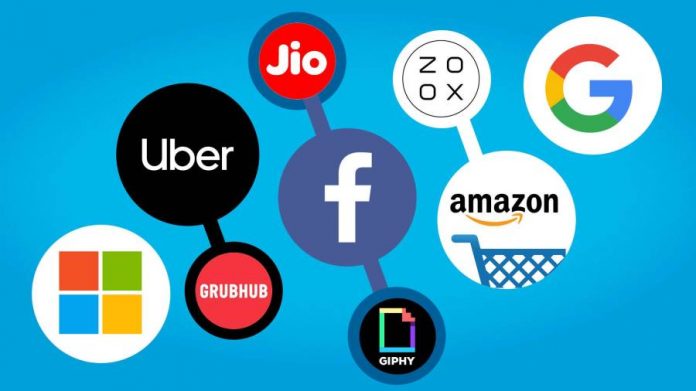This article is written by Alyan Virani, pursuing a Diploma in M&A, Institutional Finance and Investment Laws (PE and VC transactions) from Lawsikho.com
Table of Contents
Introduction
A merger occurs when two or more firms combine to form a single new company. Whereas in an acquisition, a corporation or investor group finds a target company and intends on purchasing for mutually beneficial reasons. There are three main types of mergers which are conglomerate, vertical and horizontal. A conglomerate merger brings together companies in unrelated businesses to minimize risk. Combining two or more companies operating in similar or different sectors can result in more stable sales. In a vertical merger, a company buys a firm in its same industry, often which is involved in its early or later stage of production or selling process. Lastly in a horizontal type of merger, companies at the same stage in the same industry merge to expand product offerings, reduce costs and competition and achieve economies of scale. 
Dell and EMC Merger
The Dell EMC merger is considered one of the largest acquisitions in the tech merger space. On 12th October 2015, Dell expressed its intent to acquire software and storage company EMC Corporation including all the micro-companies that fell under its umbrella. At a whopping $67 billion, it was termed as the “highest-valued tech acquisition in history.” The acquisition materialised on September 7, 2016, after Dell sold off various facets of the company, billions of dollars in unsecured junk bonds, shares of other companies, and millions of shares of tracking stock.
EMC owned approximately 80 percent of the stock of VMware. It was mutually agreed that the acquisition would maintain VMware as a separate company, held via a new tracking stock, while the other divisions of EMC would be rolled into Dell. Back then EMC employed 70,000 individuals and was the world’s largest provider of data-storage systems by market share, competing against several other market leaders like IBM, Hitachi Data Systems, and Hewlett Packard Enterprise.
Vertical and horizontal acquisitions
This merger presents a fascinating classification in terms of its acquisition being horizontal or vertical. Because of the enormous product lines of the two companies, this merger is in some ways vertical as well as horizontal. The main overlap in products and also competition between these two companies occurs in the area of small to mid-range storage. But keeping aside the overlap in entry and mid-range storage, the two companies differed greatly in the products they offered. For instance, dell’s products included laptops, desktops, tablets, monitors, gaming consoles, software, and various other computer accessories. It was very likely that these products could be bought by companies in bulk or the individual consumer too. On the flipside, EMC offered very little in the way of individual consumer products. Their product list mainly included software-based products such as cloud management, storage software, data protection software, information security packages, and more which were highly skewed towards attracting larger businesses rather than individual customers. Due to the different markets, the two companies competed in, the merger was also very vertical at the same time.
Deciphering the motive behind
The most important selling points Michael Dell and other executives stressed throughout the merger. It was their intent to create a favorable ”one-stop-shop” for customers. Companies would now be able to buy all required sizes and configurations of storage, among all other products, from a single company instead of having to separately shop at both to suit different needs. This has been an extremely common trend in the past few years, as many consumers appreciate the convenience of “all in one” stores.
IBM Red Hat
In October 2018, IBM, one of the world’s leading integrated technology and service companies officially agreed to acquire U.S. software company Red Hat for $34 billion, including debt, as it sought to expand its consulting and hardware business into subscription-based software offerings which are highly remunerative. With the lightning speed of technological evolution, it is no wonder that companies preferred to adopt cloud solutions to manage workload, cloud-based storage infra, tools, services, technologies, and big data analytics which indirectly increased opportunities for those in the cloud computing value chain. Basically, Red Hat will be offering IBM important subscription revenues and growth potential in cloud services.
“This acquisition is clearly seeking growth synergies. This is not about cost synergies at all,” IBM CEO Ginni Rometty mentioned in an interview. The CEO further said “IBM paid a very fair price. This is a premium company. If you look underneath, this is strong revenue growth, strong profit, and strong free cash flow.”
Upon conclusion of the acquisition, it was mutually agreed that Red Hat would join IBM’s Hybrid Cloud team as a separate unit, preserving the independence and neutrality of Red Hat’s open source development heritage and commitment, current product portfolio, go-to-market strategy, and unique development culture. Also, Red Hat would continue to be led by Jim Whitehurst and the existing management team. Jim Whitehurst would also join IBM’s senior management team and report to Ginni Rometty.
Horizontal transaction
Red Hat is the world’s leading provider of enterprise open source software solutions, using a community-powered approach to deliver reliable and high-performing Linux, hybrid cloud, container, and Kubernetes technologies. Based on open source technologies, such as Linux and Kubernetes, the platform will allow businesses to securely deploy, run and manage data and applications on-premises and on private and multiple public clouds. Owing to the next-generation hybrid multi-cloud platform that IBM intends on inculcating post the merger it is clear that this transaction is horizontal in nature.
The reason behind IBM’s acquisition
IBM intended on acquiring Red Hat for its development of what is the world’s largest portfolio of open source technology, its hybrid cloud platform, and a vast open-source developer community. Together, both the companies would become the world’s leading hybrid multi-cloud provider. The most important reasons why IBM acquired Red Hat were :
- To compete in the cloud solution market
- Non-performance of IBM Watson
- To be at par with Microsoft
By being acquired by IBM, Red Hat had gained a higher level of scale and resources, along with a better capability to boost the impact of open source as the basis for digital transformation while simultaneously preserving its unique culture and commitment towards open source innovation. With this deal, IBM hoped to target enterprise customers who were still in the early stages of their cloud migration journey. While many companies had already invested in public cloud services, there were still many existing applications that needed to be modernized before they could run effectively in the public cloud.
Microsoft Linkedin
On June 13, 2016, Microsoft officially announced its plans to acquire Linkedin, the world’s largest professional network, for a massive price of $26 billion. Basically, Microsoft was willing to pay a price of $196-per-share which was a 50 percent premium over LinkedIn’s closing price on June 10, 2016. The closure of the deal was announced by Microsoft Chief Executive Satya Nadella in a LinkedIn post on December 8, 2016, after six months after the news first broke of the deal.
It is pertinent to note that the acquisition of LinkedIn is the outcome of Microsoft`s management efforts to reinvent and diversify the company from the leading PC software maker to an entity that sells seamless business technology services. Microsoft is gradually making a paradigm shift to cloud computing, a model in which customers can rent software and other services delivered over the internet. To the working professionals and tech geeks, Microsoft’s main goal is to sell online services to business customers. However, it is equally important to note that the acquisition of LinkedIn allows Microsoft to expand its dominance in the enterprise market which comprises the major chunk of earnings for it. Headed by Jeff Weiner – CEO of LinkedIn, the company post-acquisition continues to work as a distinct unit.
Vertically-connected ecosystem making Microsoft’s acquisition of LinkedIn so compelling
Microsoft is a software company and Linkedin a social media platform, suggests the nature of transactions that had taken place between the two entities. The potential of a vertically connected ecosystem in the digital supply chain is what made Microsoft’s acquisition of LinkedIn so compelling. Although Microsoft has already had positions in all three stages namely, marketing software, internet services, and client software. Their internet services did not enjoy a great market reputation, such as Bing struggled to compete against Google Search. They had no dominant stance in the social media division. One of the key reasons for Acquiring LinkedIn was to change that. It would eventually give Microsoft a very firm Internet service that is the dominant exchange of professional social networking. As a result, they would have great offerings in all three stages. Their core business was only in a client software distribution such as Windows, Internet Explorer, Xbox, etc and their secondary strength was in marketing software such as Office, Dynamic CRM, etc. One of the main reasons for diversifying into a virtually connected ecosystem was to leverage their products in one stage (i.e internet services) to boost the value and reach of their products in other stages (client software, marketing software). For example, there could be excellent tie-ins between Linkedin and Office, such as an easy and more streamlined publishing process. Therefore, these kinds of transactions wherein a company acquires another to expand their core business are vertical in nature.
Microsoft’s vision
There are myriad reasons why this acquisition makes sense for both companies. Firstly, it aligns with Microsoft’s vision as its focus has always been on being an enterprise with a vision of empowering every person and every organisation on the planet to achieve more. While LinkedIn’s vision is to create more professional opportunities for everyone in this world through its social networking platform. Secondly, with Microsoft targeting professional cloud space and LinkedIn being a leading professional networking platform, both are trying to individually influence the enterprise/professional space to a large extent. It will allow both companies to bank on each other’s strengths. Thirdly with the enormous amount of data LinkedIn possesses there are many sectors where integration would make absolute sense both from a product improvement and monetization perspective. Also, such a strong database of Linkedin’s active users can give Microsoft a better understanding of its customers. Lastly, this acquisition will keep competitors away from the space, such as Google and Facebook out of the workplace domain.
Conclusion
Taking into account the aforementioned transactions, it is clear that the biggest tech merger deals have been aimed at diversifying the companies portfolio. At the outset, buying or merging with another company is usually cheaper and helps in accessing a wider customer base while simultaneously increasing market share. There are plenty of benefits to strategically planned acquisitions. Moreover, the better the constructed deal, the more these benefits are likely to accrue. To derive maximum utility from a transaction, one should consider which of these benefits they’re most looking for when thinking about their motives for acquiring or merging with another company.
Students of Lawsikho courses regularly produce writing assignments and work on practical exercises as a part of their coursework and develop themselves in real-life practical skills.
LawSikho has created a telegram group for exchanging legal knowledge, referrals, and various opportunities. You can click on this link and join:












